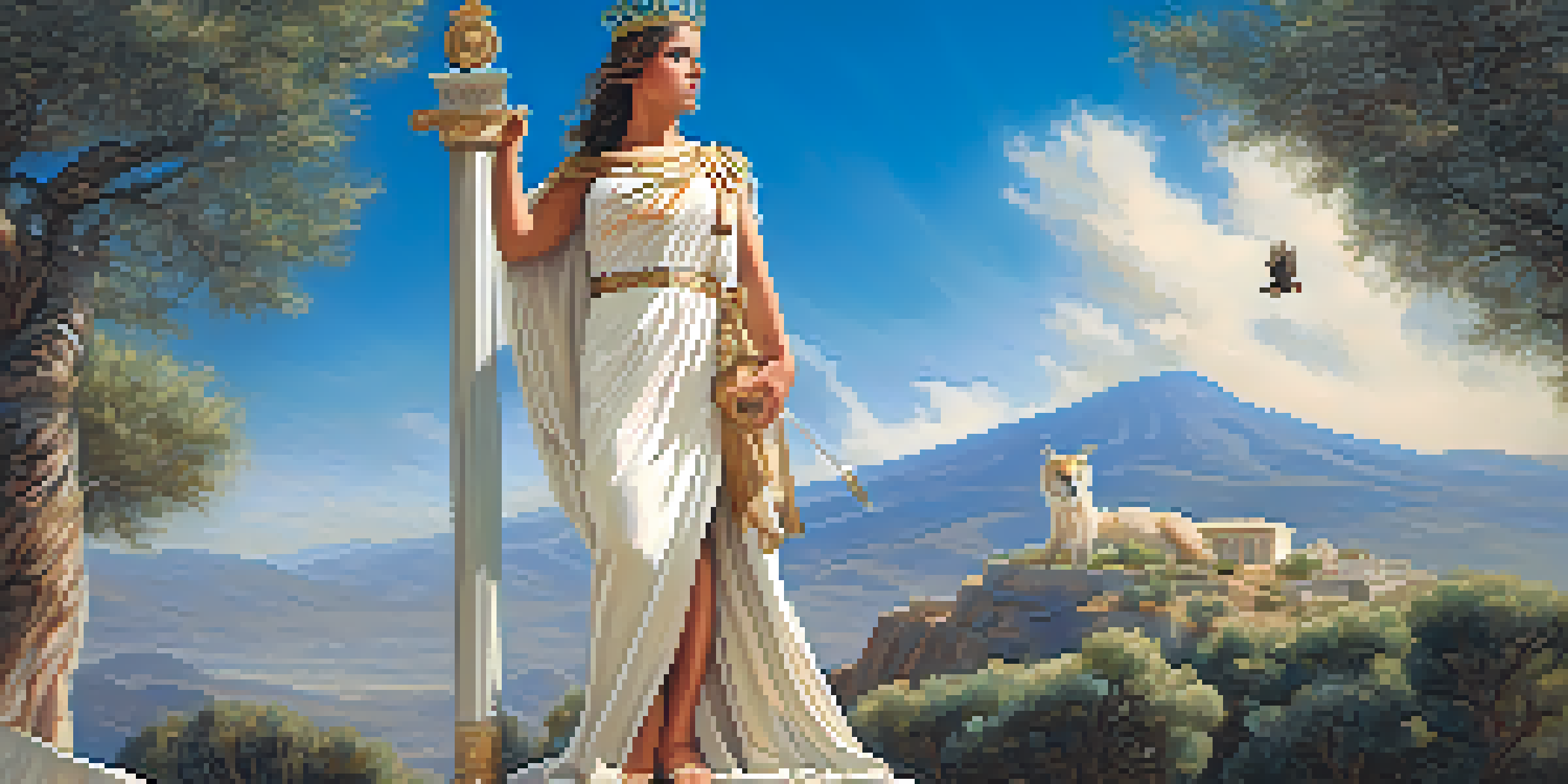The Role of Mythology in Ancient Greek Painting Narratives

Introduction to Ancient Greek Painting and Mythology
Ancient Greek painting flourished between the 8th and 4th centuries BCE, showcasing vibrant narratives steeped in mythology. The Greeks were masters at intertwining their rich mythological tales with visual art, making paintings not just decorative but also deeply meaningful. By using familiar stories of gods, heroes, and mythical creatures, artists were able to connect with viewers on a profound level. This article will explore how mythology served as a cornerstone for storytelling in ancient Greek painting.
The Significance of Mythological Themes
Mythological themes were central to ancient Greek culture, serving as a source of moral lessons and entertainment. Paintings often depicted scenes from epic tales, such as the Iliad and the Odyssey, allowing audiences to relive these adventures visually. For instance, the depiction of the Trojan War not only illustrated heroic deeds but also conveyed the consequences of pride and hubris. Thus, these themes made the paintings relatable, allowing viewers to reflect on their own lives through the lens of myth.
Mythology Shapes Greek Art's Narrative
Ancient Greek paintings infused mythological themes that conveyed moral lessons and connected deeply with viewers.
Iconography and Symbolism in Greek Art
Ancient Greek painters employed iconography to convey complex ideas without the need for words. For example, the image of Athena, often depicted with an owl, symbolized wisdom and strategy, instantly recognizable to the viewer. This use of symbols allowed artists to communicate deeper meanings and emotions, creating layers of interpretation in their works. By understanding these symbols, we can appreciate how mythology enriched the visual narratives of the time.
The Role of Gods and Goddesses in Art
Gods and goddesses occupied a significant place in Greek mythology and, consequently, in its art. Artists often portrayed deities like Zeus, Hera, and Poseidon to reflect human traits and emotions, making them relatable figures rather than distant gods. These depictions framed not just the divine but also the human condition, illustrating themes such as love, jealousy, and vengeance. This connection between the divine and human experiences enhanced the emotional depth of the paintings.
Symbolism Enhances Artistic Depth
Iconography in Greek art allowed artists to communicate complex ideas and emotions, enriching the visual storytelling.
Heroic Narratives in Greek Painting
Heroic narratives were another popular subject in ancient Greek painting, illustrating the exploits of legendary figures like Heracles and Achilles. These heroes represented ideal virtues such as bravery, strength, and honor, serving as role models for contemporary audiences. Paintings that depicted their trials and triumphs inspired viewers, encouraging them to aspire to similar virtues in their own lives. This emphasis on heroism not only entertained but also instilled a sense of cultural identity and pride.
The Influence of Mythology on Artistic Techniques
The stories told through ancient Greek paintings also influenced artistic techniques and styles. Artists often used specific compositions and color palettes to evoke certain emotions associated with the myths they depicted. For example, the dramatic use of red and black in pottery painting not only highlighted the figures but also intensified the narrative's emotional impact. This strategic use of techniques helped to elevate the storytelling aspect of the paintings.
Legacy of Myths in Modern Art
The influence of ancient Greek mythology continues to resonate in contemporary art, showcasing timeless themes of love and heroism.
Legacy of Greek Mythology in Modern Art
The influence of ancient Greek mythology in painting extends far beyond its time, shaping modern art movements and artists. Many contemporary artists continue to draw inspiration from these timeless stories, reinterpreting them through modern lenses. For instance, the themes of love and heroism are still prevalent in today's visual arts, showcasing the enduring nature of these narratives. This legacy demonstrates how mythology continues to resonate with audiences, bridging the past and present.
Conclusion: The Enduring Power of Myth in Art
In summary, mythology played a pivotal role in ancient Greek painting, enriching narratives and engaging viewers on multiple levels. Through the use of symbolic imagery and heroic tales, artists created works that not only decorated spaces but also conveyed profound cultural messages. Today, as we admire these paintings, we can appreciate the timeless stories they tell and the lessons they impart. The enduring power of myth in art reflects our shared human experience, reminding us of the beauty of storytelling across the ages.